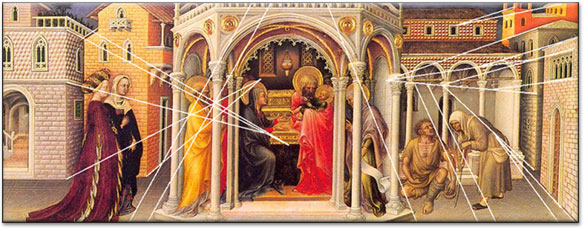I was 10 years old when my father took me to accompany him
on a business trip to Amsterdam. He was an agent for a discount cloth retailer
called Zeeman, and he arranged for me
to get a tour of their super-advanced warehouse. The man showing me around
spoke of a robot that automatically sorted and arranged a large number of
boxes. I was very excited imagined seeing something like the image below but all
I saw was a machine that looked like a crane. My perception of robotics was
entirely shaped by art and science fiction.
 |
| My perception of a robot |
Art and robotics have more in common than you may think. The
famous Matrix trilogy illustrates
Descarte’s famous mind and body problem. Descartes says that we cannot be sure
that we are our bodies and we are physically present in a particular place. The
Matrix portrays a world in which
robots are in control of humans who are actually living in a simulation but
they do not know that they are actually sleeping in a machine. The movie is a
great combination philosophy and artificial intelligence depicted artistically
through a movie.
 |
| In the Matrix since birth, humans are controlled by robots |
A living example of an individual who embraces robotics and
art is Dr. Mari Velonaki, who is an artist and Director of the Creative
Robotics Lab at the University of New South Wales. She makes artistic statues
like Diamandini that can walk and
interact with humans. People perceived the statues as having “ a will of their
own.”
Brooks, Katherine. "If The Future Of Art Is
Robotics, At Least It Will Be Adorable." The Huffington Post. TheHuffingtonPost.com, n.d. Web. 16 Apr. 2015.
<http://www.huffingtonpost.com/2013/11/14/robo-faber_n_4269146.html>.
Descartes, Rene. "Meditation 1 by Rene
Descartes." Meditation 1 by Rene
Descartes. University of Oregon, n.d. Web. 16 Apr. 2015.
<http://oregonstate.edu/instruct/phl302/texts/descartes/meditations/Meditation1.html>.
"Diamandini Robotic Statue by Mari
Velonaki." YouTube. YouTube,
n.d. Web. 16 Apr. 2015.
<https://www.youtube.com/watch?t=34&v=BMqS3AeCCTU>.
Lim, Angelica. "What Roboticists Can Learn From
Art, and What Artists Can Learn From Robots." IEEE Spectrum, n.d. Web. 16
Apr. 2015. <http://spectrum.ieee.org/automaton/robotics/diy/what-roboticists-can-learn-from-art>.
"The Matrix Trilogy." SparkNotes. SparkNotes, n.d. Web. 16 Apr. 2015.
<http://www.sparknotes.com/film/matrix/section1.rhtml>.



